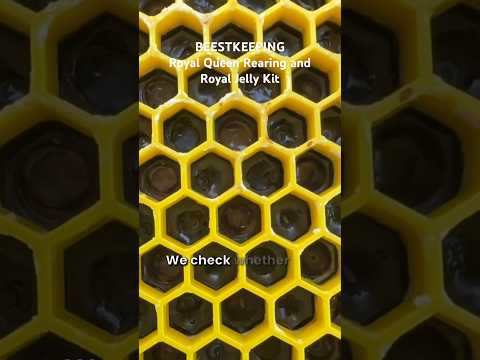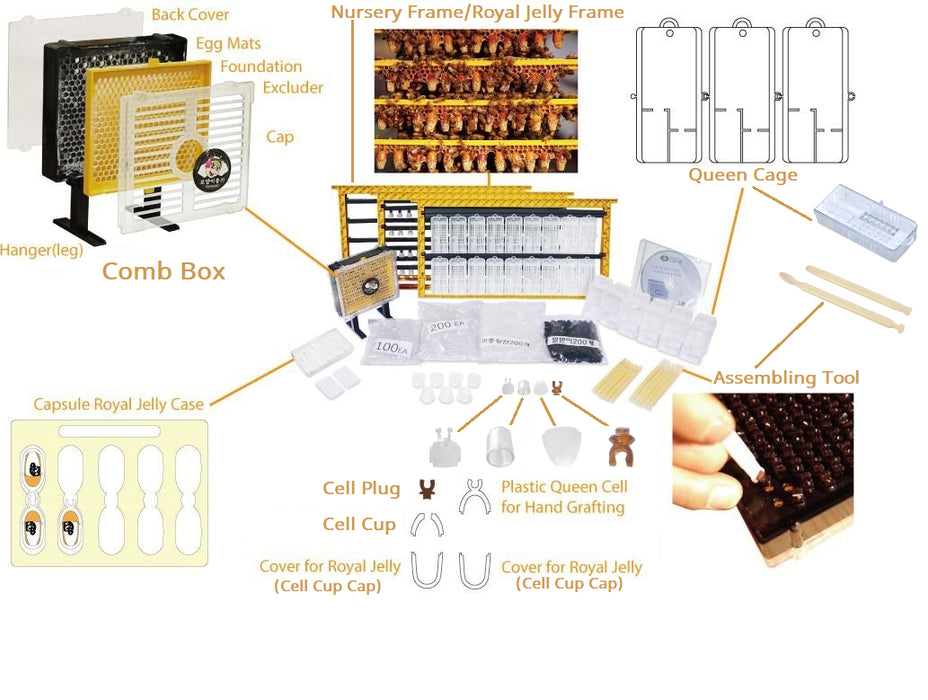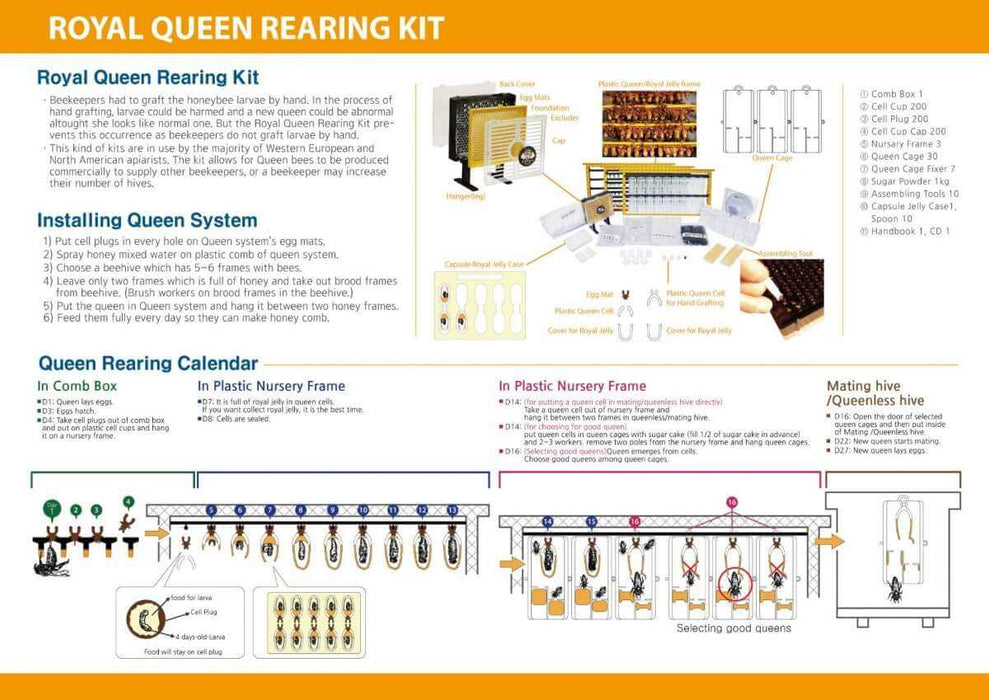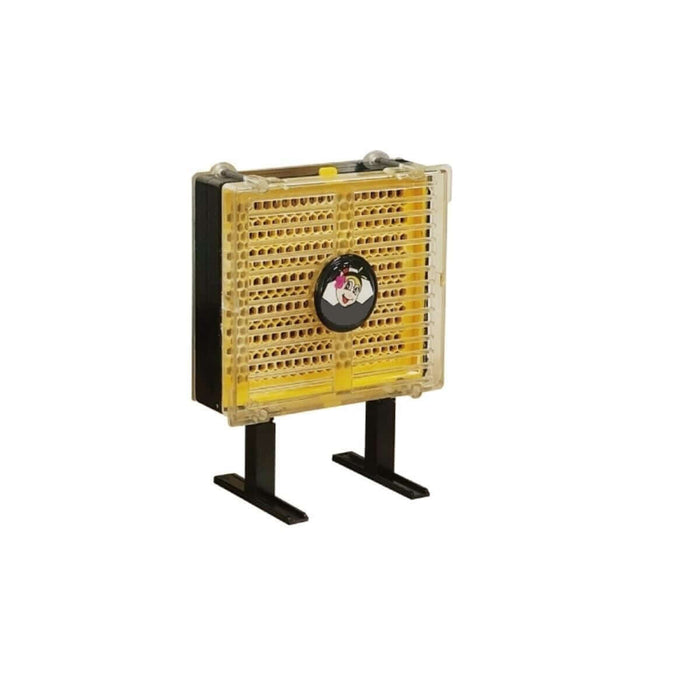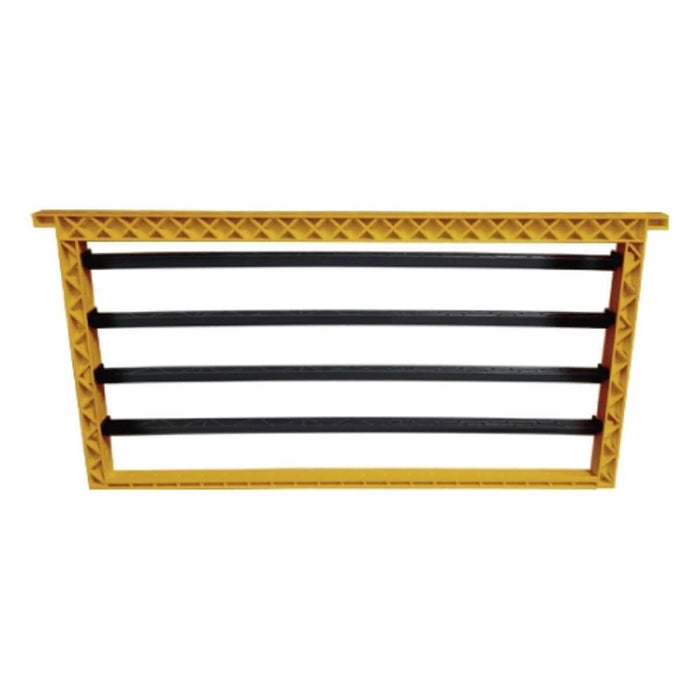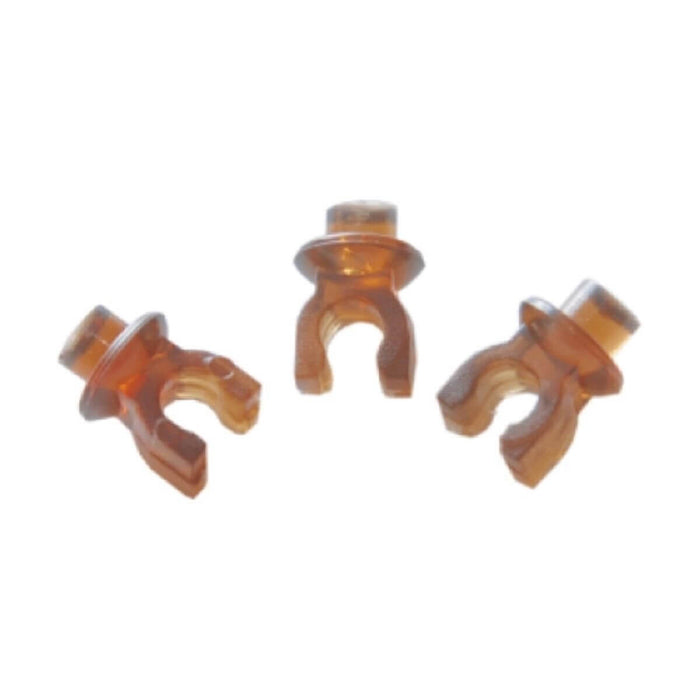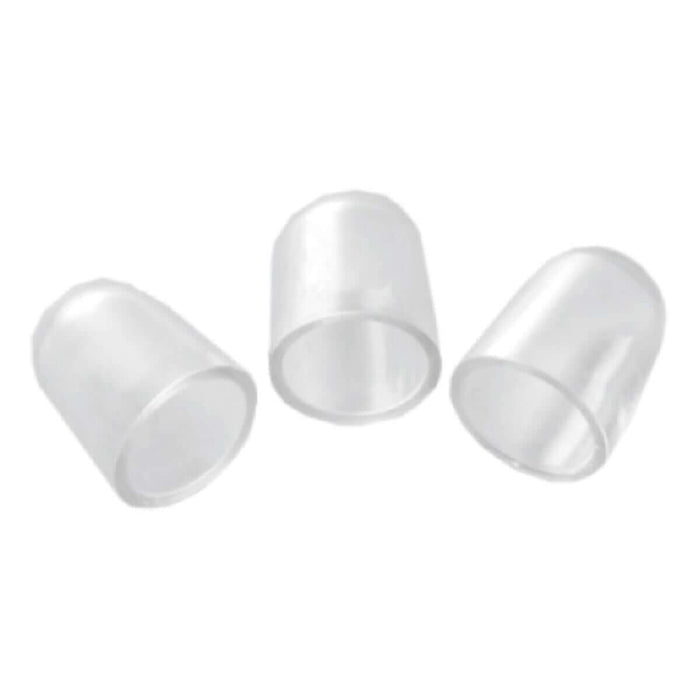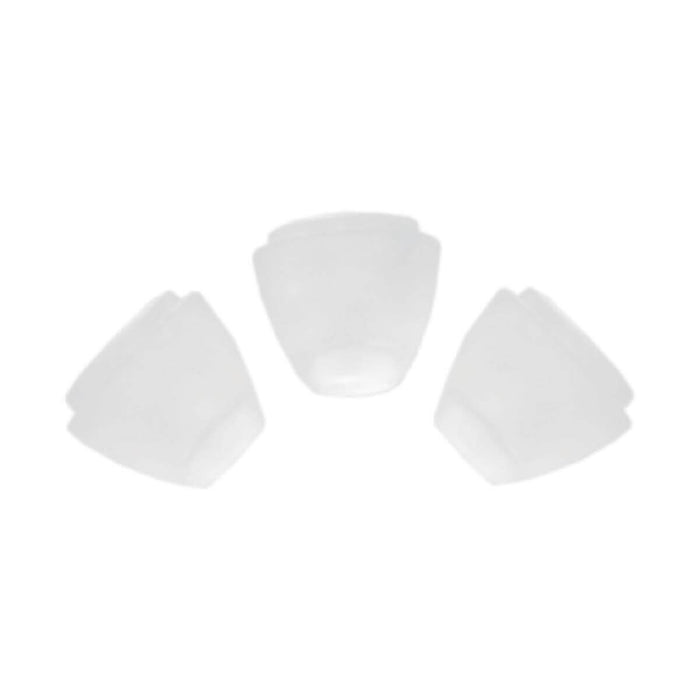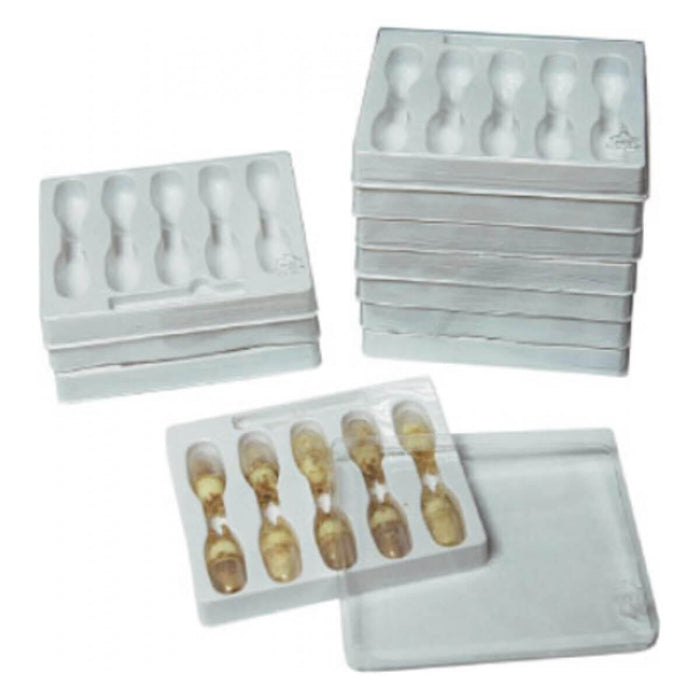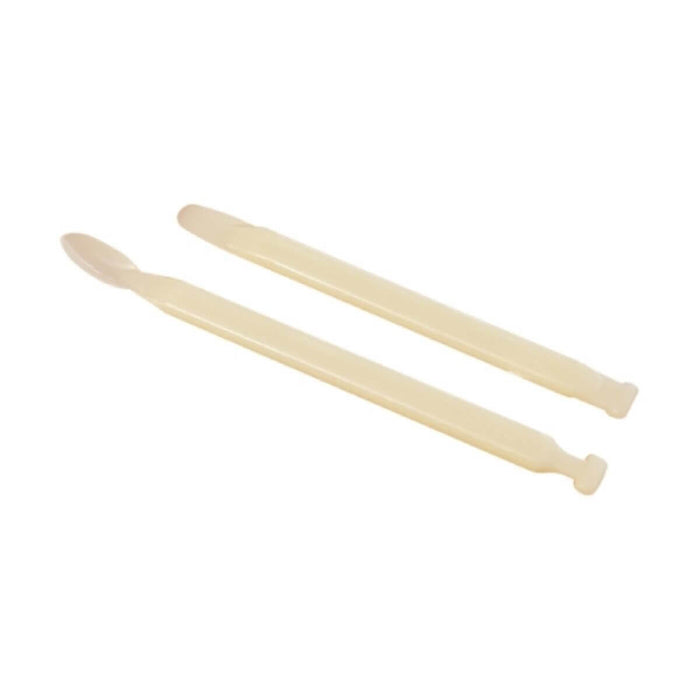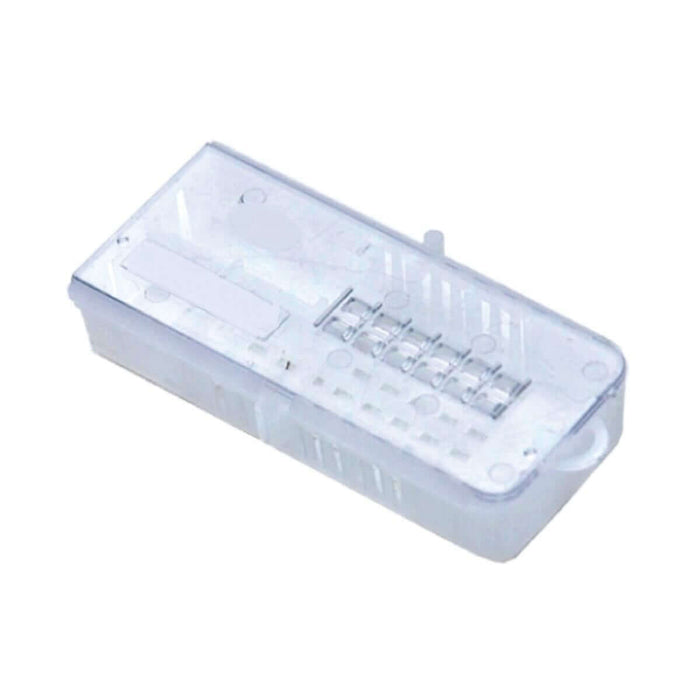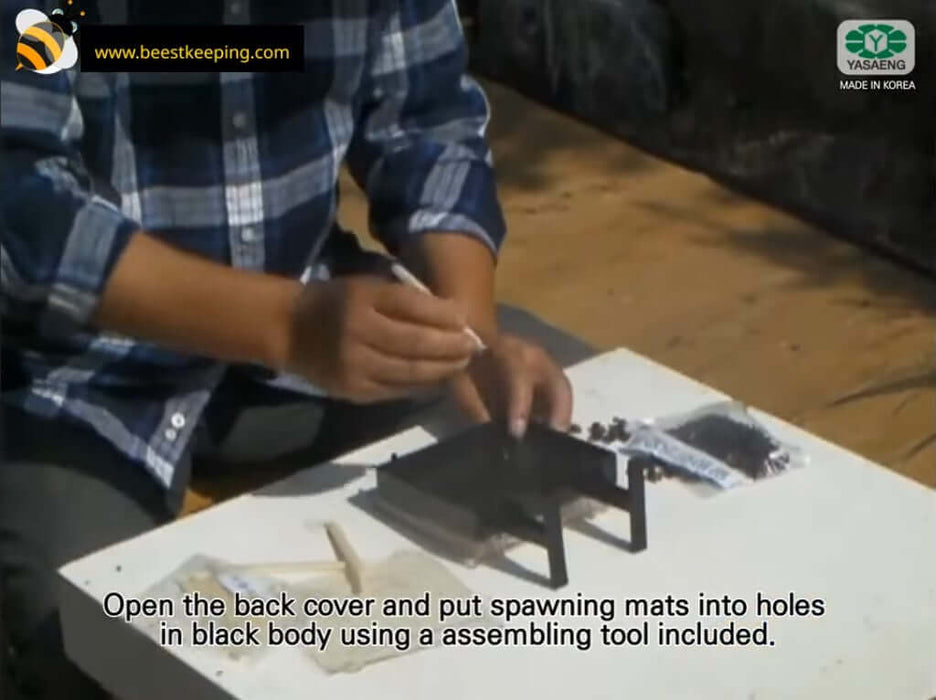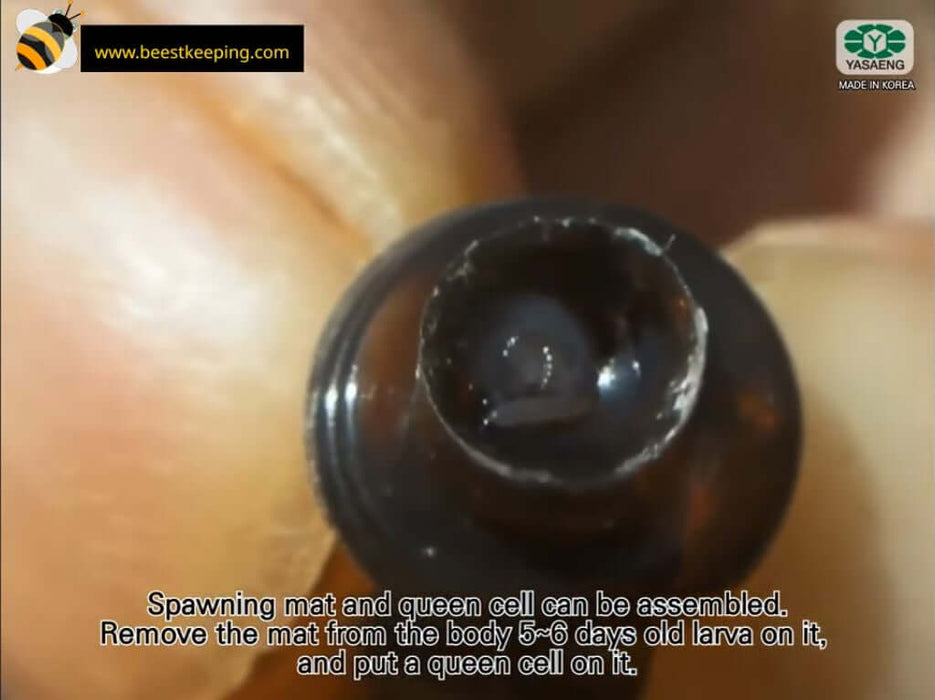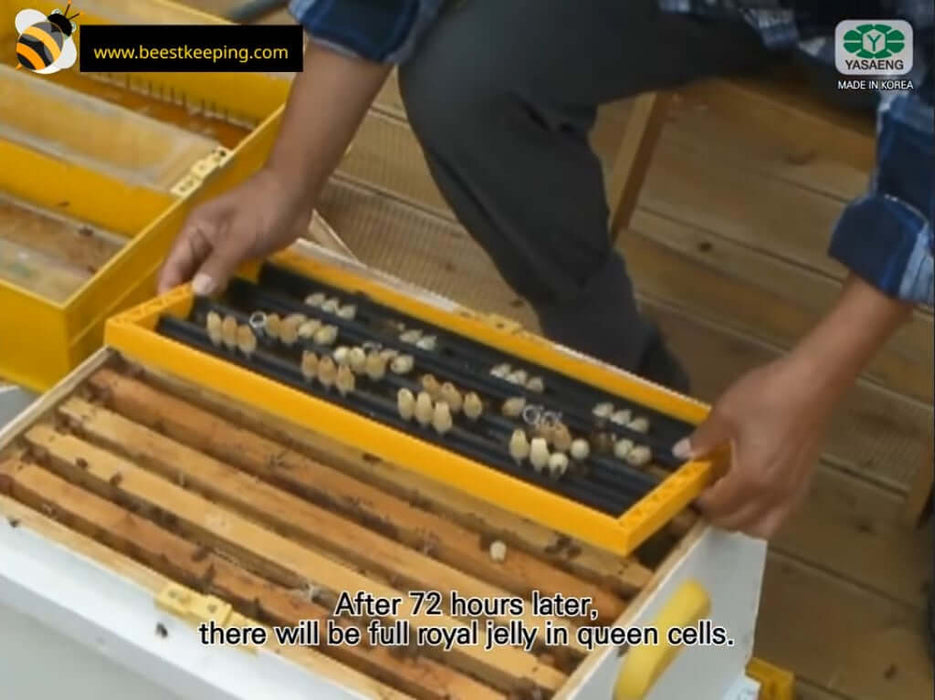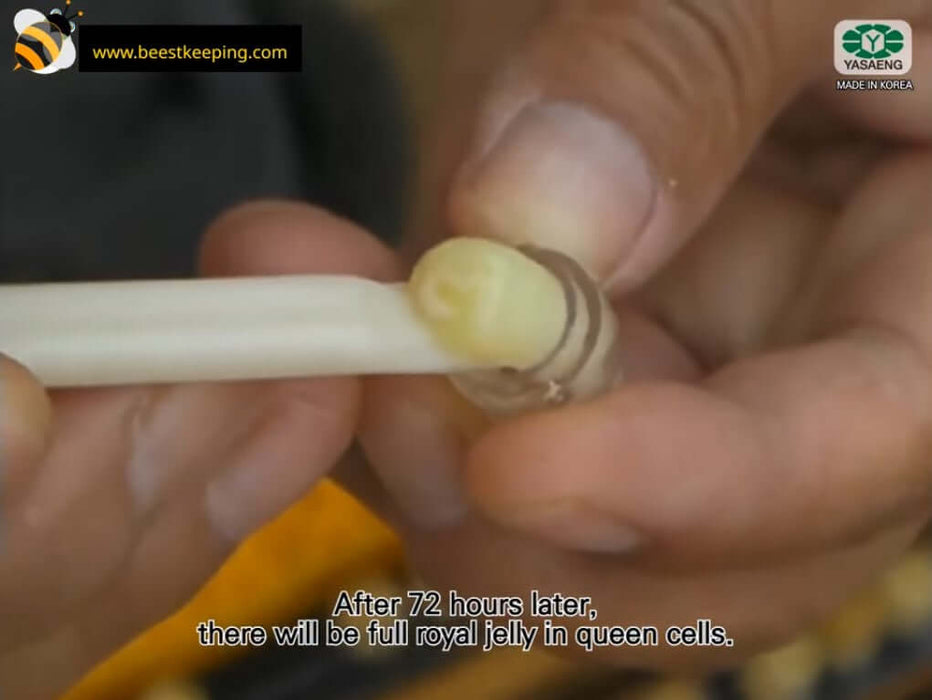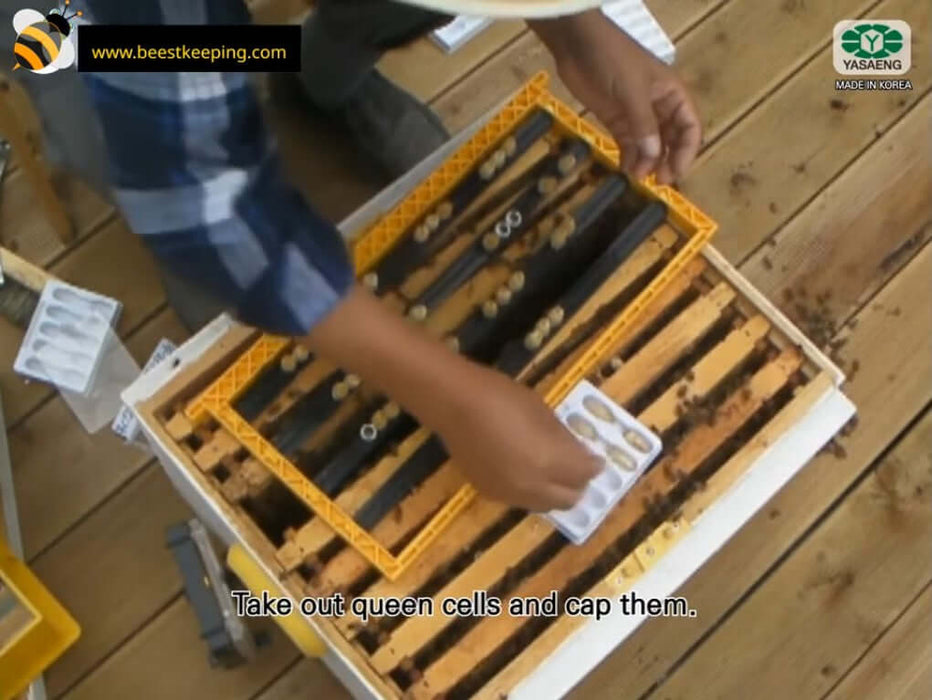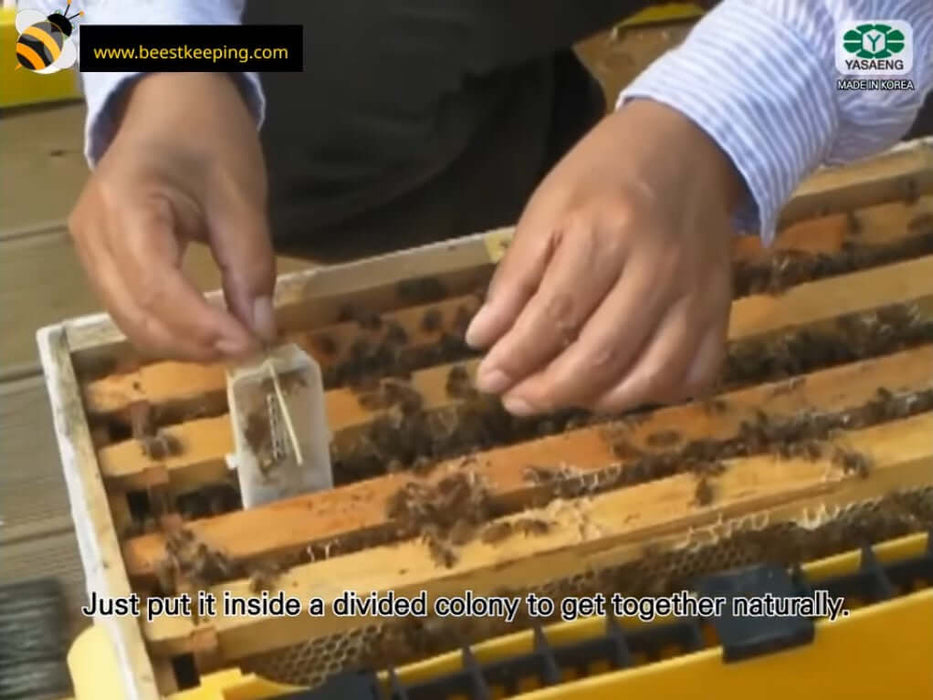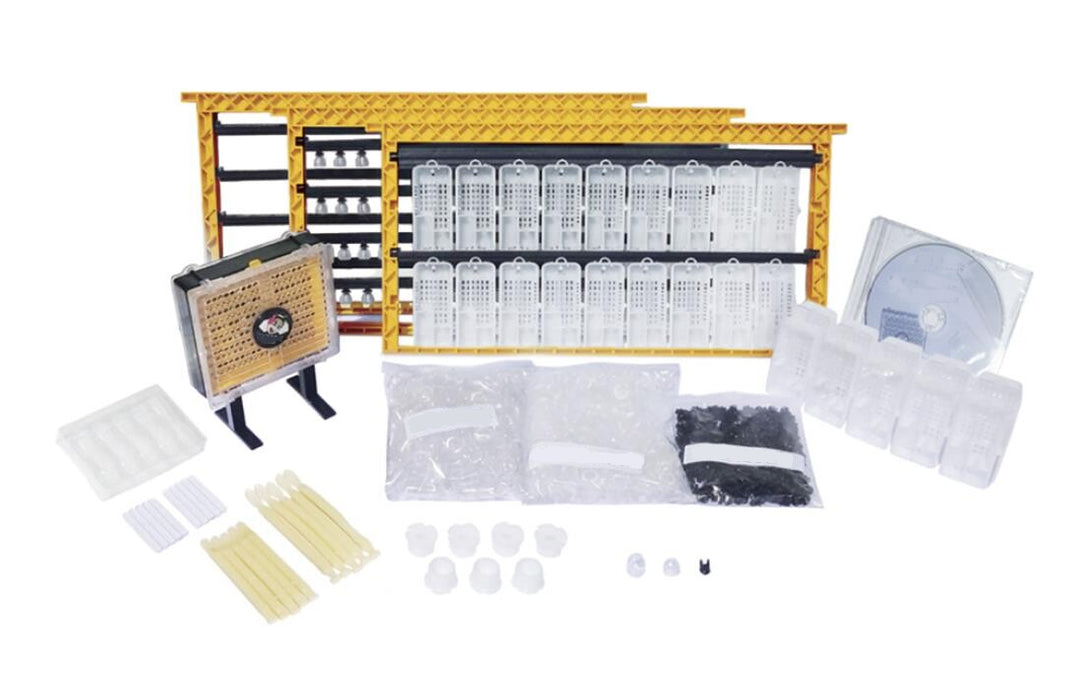

See What Beekeeping Experts Say About This Kit | Beekeeping Made Simple
See What Beekeeping Experts Say About This Kit | The Hive Doctor
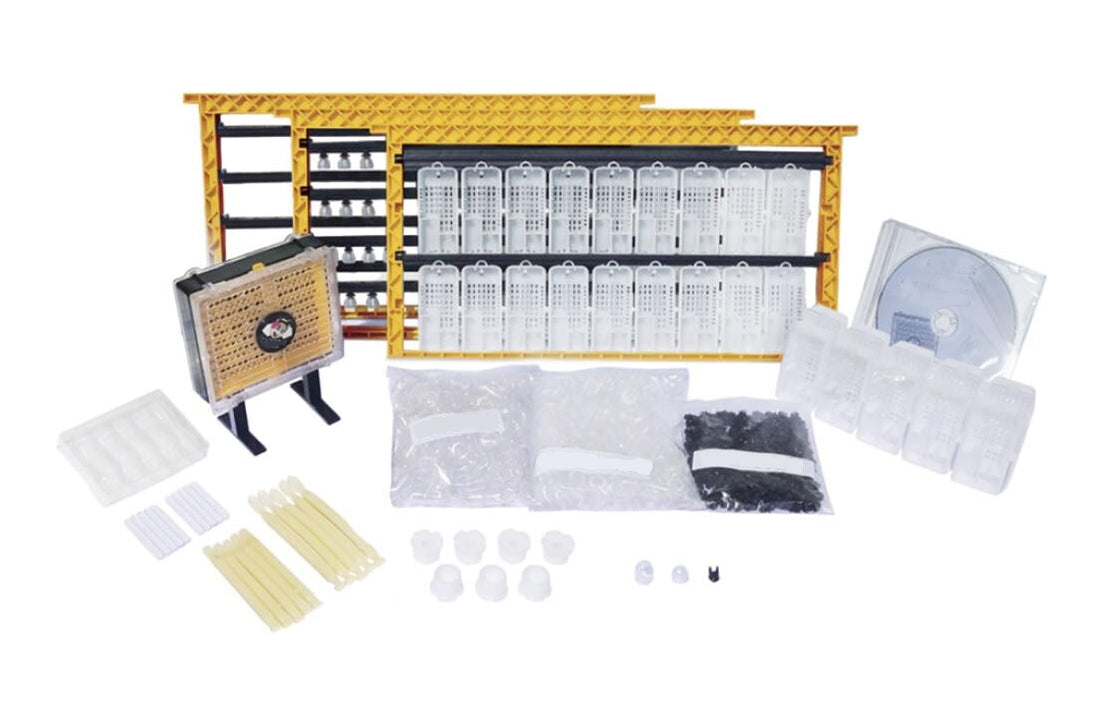
What's in the box?
Comb Box (1 pcs)
Cell Cup (200 pcs)
Cell Plug (200 pcs)
Cell Cup Cap (200 pcs)
Nursery Frame (3 pcs)
Queen Cage (30 pcs)
Queen Cage Fixer (7 pcs)
Assembly Tool (10 pcs)
Royal Jelly Spoon (10 pcs)
Royal Jelly Cup Container (1 pcs)
Instructions (1 pcs)
CD (1 pcs)
Watch the video to learn how this excellent kit is used in the field !
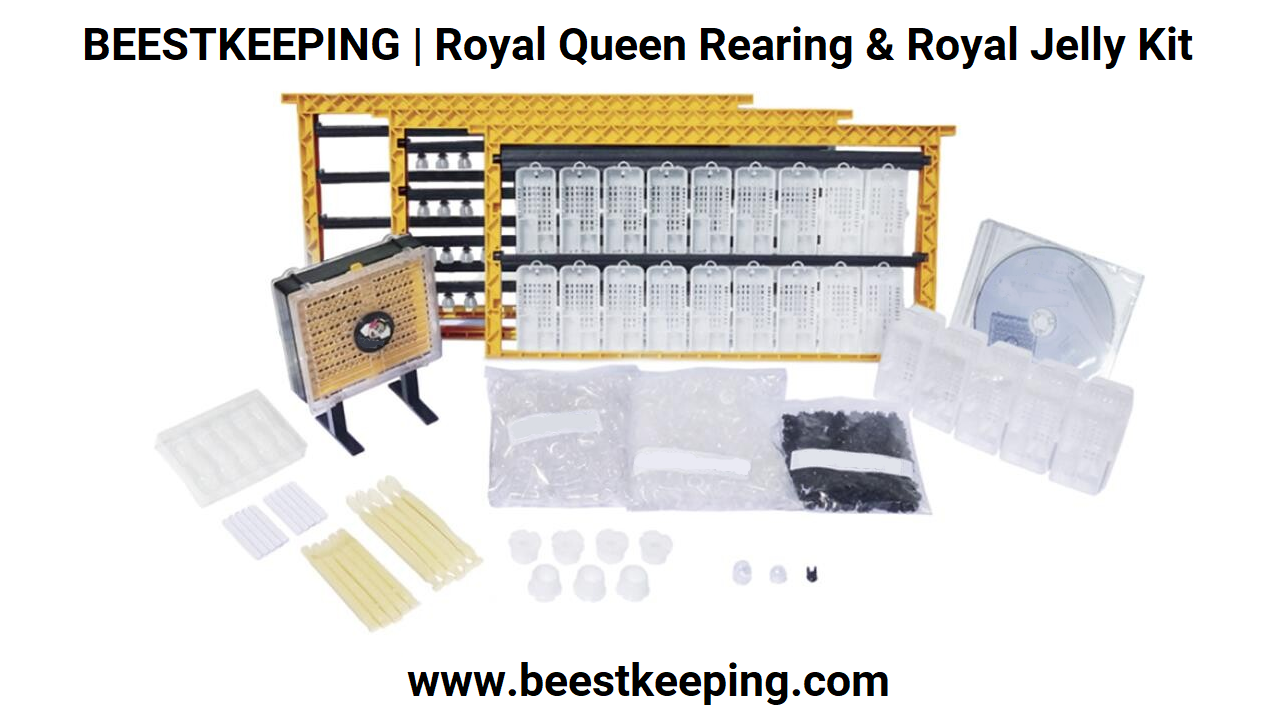
How to Use?

There is a transparent cover on the front of the comb box.
This serves as a queen excluder that prevents the queen from leaving.
The bees can enter through it and perform cleaning or maintenance.
The transparent cover at the back of the comb box is opened and the cell plugs from the kit are inserted into holes in comb box.
There are 123 holes in the comb box. So that 123 eggs can be producted.
The comb box is closed after it is completely filled with cell plugs.
You should put cell plug into all of holes in comb box, because queen do not lay eggs on cell plug nearby blank holes.
Honey syrup is prepared and sprayed on the surface of the comb box for the bees to get used to the product.
The comb box is placed between 2 frames in the hive with the help of a hanging device so that the bees can enter inside and clean and organize for 1 day.
During 1 day, the bees fluff the comb box by another 1 mm to create a suitable surface for the queen to lay eggs.
Day 1 [e.g. May 1]
After the cleaning operations in the comb box are completed, the front round cover is opened and the brood queen is gently released inside.
The comb box is then placed in the hive.
Brush bees on frames of brood frames and take out frames and then leave two full honey frames to encourage queen's spawning.
Adequate nutrition should also be provided by giving cakes and syrup.
The date of leaving the breeding queen inside should be noted.
For example, let's say today is May 1 and in the morning the breeding queen is placed in the comb box.
In the evening of the same day, i.e. May 1, the comb box is checked and the oviposition status is observed.
If the brood queen has laid eggs, the brood queen is released. Then the comb box is put back into the hive.
The comb box should be placed with its face facing the honeycomb containing the larvae.
The box should be placed facing the honeycomb with the larvae so that the bees can care for the eggs in the comb box and allow them to hatch while caring for the daily eggs in the hive.
3 Days Later (72 hours later) [e.g. May 4]
After 3 days, i.e. 72 hours, the eggs turn into larvae. In other words, the eggs hatch and larvae begin to form.
At this stage, the lid behind the comb box is opened and cell plugs with only hatched eggs (larvae) are removed using the assembly tool and combined with cell cups.
The combined cell cup and cell plugs (i.e. queen cells) are attached to the nursery frame.
In order to breed higher quality queens, it is recommended to put a maximum of 30 queen cells in the nursery frame, for example, if there are 10 frames in the starter hive.
Some beekeepers may want to raise more queens by putting more queen cells, but it should be noted that the more royal jelly the larvae are fed, the better quality the resulting queen will be.
Put nursery frame in strong colony and feed them continously.
Day 7 [e.g. May 7]
If royal jelly is to be harvested, the royal jelly is harvested on day 7 by removing the queen cells from the nursery frame and closing the cell cup cap (which is included in the kit) over them.
Pack completed royal jelly capsules in containers and keep it in a freezer as soon as possible.
If it is kept at room temperature for a long time, larvae may eat royal jelly.
Day 14 [e.g. May 14]
On the 14th day, the queen cells are gently removed from the nursery frame and placed in the corresponding place of the queen cages so that the queens that may be born prematurely do not harm the others.
Thus, the births take place in the queen cages.
Cake and 2-3 bees are placed inside the queen cages.
Then, two black bars are removed from the nursery frames, leaving only one black bar in the middle.
The queen cages are placed in the nursery frames.
Queen Cage Fixers are placed between the bars in the Nursery Frames and the Queen Cages. Queen Cage Fixers is for Queen Cages to remain stable in the Nursery Frames. (To see it as a picture, you can see it at the bottom of the home page among the usage pictures.)
The nursery frames are then put back into the hive.
Day 16 [e.g. May 16]
On the 16th day, births take place.
How to select good queens?
1. Not disabled legs
2. Not microsomatia
3. Not injured wings
You can choose black or yellow bloods you want.
Disconnect a queen cage which you have selected and open the side gate of sugar room.
Good, quality queens are put into the mating hive to come together naturally.
Day 22 [e.g. May 22]
The new queen starts mating.
Day 27 [e.g. May 22]
The new queen starts laying eggs.
Using this kit you can raise queens and produce royal jelly very easily. This kit is for you!
BUY IT NOW
Spare Parts of Royal Queen Rearing and Royal Jelly Kit
-
 Save $40.00
Original price $140.00Original price $140.00 - Original price $140.00Original price $140.00Current price $100.00$100.00 - $100.00Current price $100.00
Save $40.00
Original price $140.00Original price $140.00 - Original price $140.00Original price $140.00Current price $100.00$100.00 - $100.00Current price $100.005 Pack Royal Jelly Plug (Each Pack Contains 200 pcs Royal Jelly Plug)
They are replacement Royal Jelly Plug of the Royal Queen Rearing & Royal Jelly Kit.
Original price $140.00Original price $140.00 - Original price $140.00Original price $140.00Current price $100.00$100.00 - $100.00Current price $100.00Save $40.00 -

 Save $25.00
Original price $200.00Original price $200.00 - Original price $200.00Original price $200.00Current price $175.00$175.00 - $175.00Current price $175.00
Save $25.00
Original price $200.00Original price $200.00 - Original price $200.00Original price $200.00Current price $175.00$175.00 - $175.00Current price $175.00Comb Box
They are replacement Comb Box of the Royal Queen Rearing & Royal Jelly Kit.
Original price $200.00Original price $200.00 - Original price $200.00Original price $200.00Current price $175.00$175.00 - $175.00Current price $175.00Save $25.00 -
 Save $35.00
Original price $150.00Original price $150.00 - Original price $150.00Original price $150.00Current price $115.00$115.00 - $115.00Current price $115.00
Save $35.00
Original price $150.00Original price $150.00 - Original price $150.00Original price $150.00Current price $115.00$115.00 - $115.00Current price $115.005 Pack Cell Plug (Each Pack Contains 200 pcs Plug)
They are replacement Cell Plug of the Royal Queen Rearing & Royal Jelly Kit.
Original price $150.00Original price $150.00 - Original price $150.00Original price $150.00Current price $115.00$115.00 - $115.00Current price $115.00Save $35.00 -
 Save $40.00
Original price $140.00Original price $140.00 - Original price $140.00Original price $140.00Current price $100.00$100.00 - $100.00Current price $100.00
Save $40.00
Original price $140.00Original price $140.00 - Original price $140.00Original price $140.00Current price $100.00$100.00 - $100.00Current price $100.005 Pack Cell Cup Cap (Each Pack Contains 200 pcs Cup Cap)
They are replacement Cell Cup Cap of the Royal Queen Rearing & Royal Jelly Kit.
Original price $140.00Original price $140.00 - Original price $140.00Original price $140.00Current price $100.00$100.00 - $100.00Current price $100.00Save $40.00 -
 Save $35.00
Original price $150.00Original price $150.00 - Original price $150.00Original price $150.00Current price $115.00$115.00 - $115.00Current price $115.00
Save $35.00
Original price $150.00Original price $150.00 - Original price $150.00Original price $150.00Current price $115.00$115.00 - $115.00Current price $115.005 Pack Cell Cup (Each Pack Contains 200 pcs Cup)
They are replacement Cell Cup of the Royal Queen Rearing & Royal Jelly Kit.
Original price $150.00Original price $150.00 - Original price $150.00Original price $150.00Current price $115.00$115.00 - $115.00Current price $115.00Save $35.00 -

 Save $30.00
Original price $150.00Original price $150.00 - Original price $150.00Original price $150.00Current price $120.00$120.00 - $120.00Current price $120.00
Save $30.00
Original price $150.00Original price $150.00 - Original price $150.00Original price $150.00Current price $120.00$120.00 - $120.00Current price $120.003 Pieces Nursery Frame
They are replacement Nursery Frame of the Royal Queen Rearing & Royal Jelly Kit.
Original price $150.00Original price $150.00 - Original price $150.00Original price $150.00Current price $120.00$120.00 - $120.00Current price $120.00Save $30.00
Customer Reviews
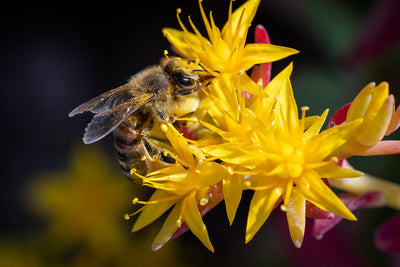
As an avid beekeeper, I’ve always wanted to try queen rearing but found the grafting process intimidating. This Queen Bee and Royal Jelly Production Set has been a total game changer! The fact that it eliminates grafting by allowing the queen to lay directly in the cell cup is such a smart and innovative design. I highly recommend this kit. It’s well worth the investment, and the results speak for themselves.
Steve Curtiss
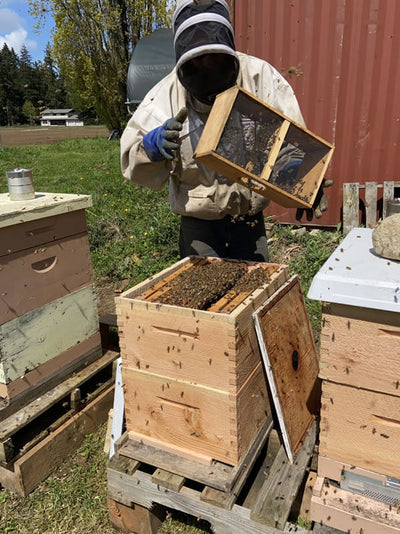
I purchased the kit a few months ago, and it has completely transformed the way I manage my apiary. The graft-free system is a lifesaver. It allowed me to rear queens without the usual hassle, and the process was much simpler than I expected. If you’re on the fence about getting this, don’t hesitate. It’s user-friendly, efficient, and pays for itself quickly with the benefits it brings to your hives. I wish I had bought it sooner.
Jack Junior Lambert
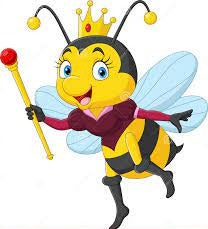
The capacity to raise up to 123 queens is amazing. This kit is well-designed, durable, and easy to use. It’s perfect for anyone looking to take their beekeeping to the next level. Highly recommended!
Jennifer Hurt
